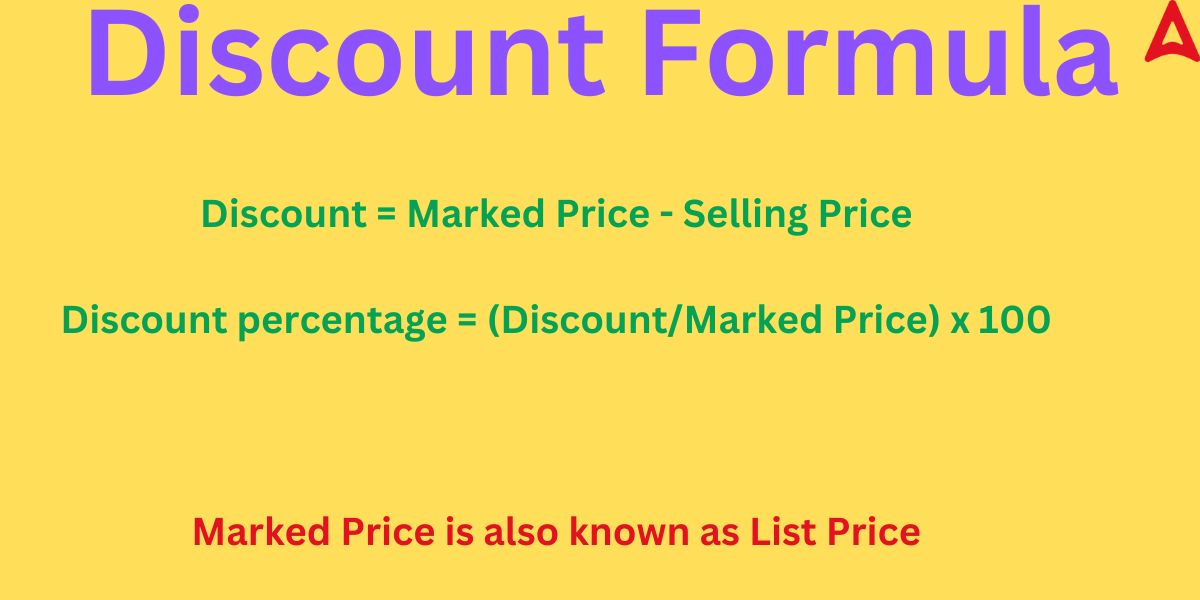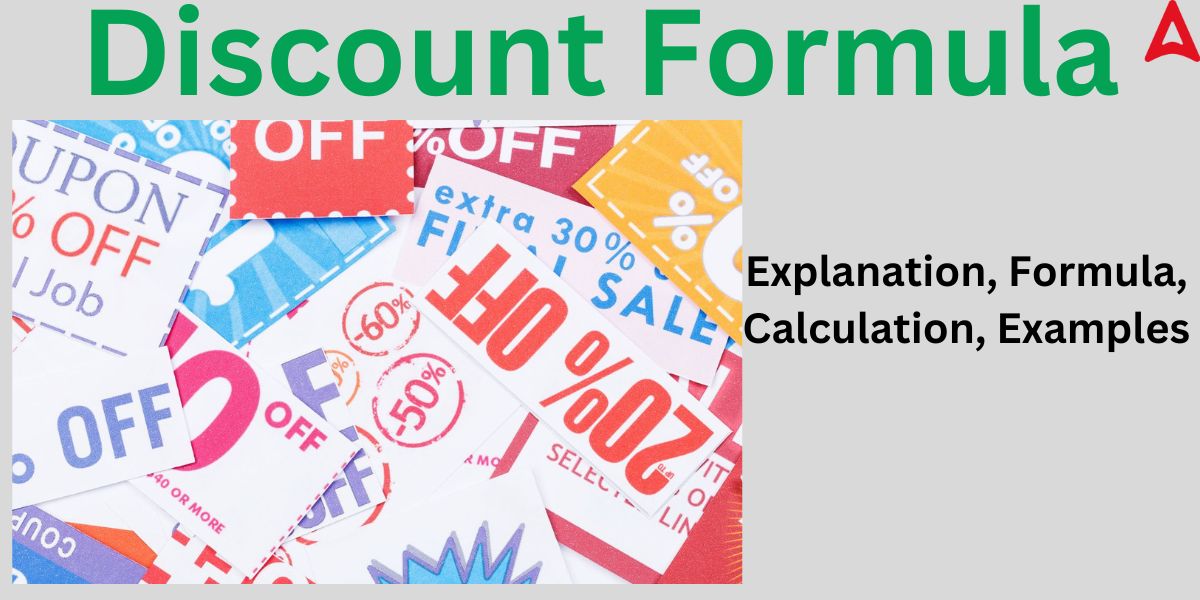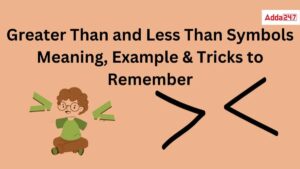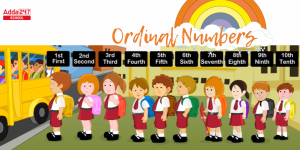During the festive season, you all must have come across words like 50% discount or mega sale with 40% off. These are some examples of discounts that we encounter in our lives on a day-to-day basis. We all must have witnessed this discount phenomenon in our lives and must have been its consumers at least once. The discount formula is one of the most important formulas in the world of mathematics which finds enormous use in the business world. There are different types of formulas for different scenarios. In this article, we will cover each and every aspect of the discount formula including solved examples so that students can develop a complete understanding of this important concept. But before jumping to the formula, let us know what exactly is a discount.
Discount
A “discount” is a price reduction from what is listed or marked in order to sell something for less. Discount is the state of having a bond’s price lower than its face value. The difference between an item’s marked price value and its selling price value is the discount. A number or a percentage might be used to represent a discount. The discount is the amount that separates the selling price from the advertised price or marked price. Discounts are a frequent financial notion that one encounters every day. Understanding how discounts operate is essential whether you’re a consumer, a business owner, or a financial analyst. After understanding its relevance in modern-day business landscape, let us explore its formula.
Discount Formula
Discounts are offers or rebates made to customers on the marked-down prices of goods. It should be noted that a discount is always determined based on the article’s marked price (list price). Discount formula is a way to find the value of discount offered.
The formula for discount is given by:
Discount = Marked Price – Selling Price
or Marked Price = Selling Price + Discount
For example, if the selling price of an item is 900 and the marked price is given as 1049, then the discount will be 1049 – 900= Rs 149.
Discount Percentage Formula
We can also find out the discount offered on an item in terms of percentage. The discount percentage is also known by the name discount rate. The formula for the same is given below:
The discount percentage formula is given by:
Discount percentage = (Discount/Marked Price) x 100
or, Discount percentage = [(Marked Price – Selling Price)/Marked Price] x 100

Rate of Discount Formula
The discount percentage formula is also termed as rate of discount formula. There are different types of formulas for this scenario depending on the value of various price. Some of the formulas on this topic are given below.
- Discount percentage = Rate of discount = (Discount/Marked Price) x 100
- Rate of Discount = [(Marked Price – Selling Price)/Marked Price] x 100
- Selling Price = [(100 – discount %)/100] x Marked Price
- Marked Price = [100/(100 – discount %)] x Selling Price
Discount Formula in Hindi
Discount को हिंदी भाषा में छूट कहा जाता है| “छूट” किसी चीज को कम कीमत पर बेचने के लिए सूचीबद्ध या चिह्नित कीमत से की जाने वाली कीमत में कटौती है। छूट किसी वस्तु की कीमत उसके अंकित मूल्य से कम होने की स्थिति है। किसी वस्तु के अंकित मूल्य मूल्य और उसके विक्रय मूल्य मूल्य के बीच का अंतर छूट है। छूट दर्शाने के लिए एक संख्या या प्रतिशत का उपयोग किया जा सकता है। छूट वह राशि है जो विक्रय मूल्य को विज्ञापित मूल्य या अंकित मूल्य से अलग करती है। छूट वस्तुओं की अंकित कीमतों पर ग्राहकों को दी जाने वाली पेशकश या छूट है। यह ध्यान दिया जाना चाहिए कि छूट हमेशा वस्तु के अंकित मूल्य (सूची मूल्य) के आधार पर निर्धारित की जाती है।
Vikray Mulya ka Formula
छूट का सूत्र इस प्रकार दिया गया है:
छूट = अंकित मूल्य – विक्रय मूल्य
या, अंकित मूल्य = विक्रय मूल्य पर छूट
छूट प्रतिशत = (छूट/चिह्नित मूल्य) x 100
या, छूट प्रतिशत = [(अंकित मूल्य – विक्रय मूल्य)/अंकित मूल्य] x 100
Selling Price Formula
The selling price (SP) is the price at which a product is sold to the customer. It can be calculated using different formulas depending on the information available:
Basic Selling Price Formula:
or
Successive Discount Formula
Successive discount is an important discount concept. Successive discount is the phenomena of discount on a discount. That is, when a discount is offered on a discount, then it is known as successive discount. It is analogous to the compound interest, that is the condition when an interest is offered on the interest. The successive discount formula is used to calculate the combined effect of the of successive discounts offered on an item. The combined discount value (total discount value) is the single value which will account for both the discounts offered.
The successive discount formula is given by:
Total Discount Value = a + b -(ab/100)
where, a = first discount %
b = second discount %
How to Calculate Discount percentage
We can calculate the discount offered on an object easily using the discount formula. Discount calculation is one of the most important skills that one must possess in order to plan for a financial step like purchase of items during certain time when the discount is offered. This skill is vital for shopping and managing your overall household expenses. To promote their websites and items these days, online e-commerce markets typically prefer to give a specific discount percentage. Discounts are typically calculated by multiplying the original marked price by the decimal representation of the percentage discount. We must figure out the difference between the item’s original price and the discount in order to get its net selling price. For this one must know how to use the formula for discount to get the value of selling price. The steps mentioned below will help you in obtaining the selling price using discount.
Step 1: Divide the discount % by 100 to get a decimal value if the discount is given in percentage.
Step 2: To calculate the discount, multiply the marked price by the decimal value obtained in the first step.
Step 3: To get the selling price, deduct the discount from the marked price.
Discount Formula Solved Examples
We have solved some questions on the concept of discount. These solved examples will help students grasp this concept in a better way. The solved examples on this formula are listed hereunder.
Example 1: Determine the discount percentage for a Rs. 1000 item with a Rs. 400 discount.
Solution: we have been given marked price = Rs 1000
discount = Rs 400
as, discount% = (discount/marked price) x 100
discount% = (400/1000) x 100
Hence, discount% = 40%
Example 2: Calculate the discount amount for a Rs. 7000 item with a 10% discount.
Solution: Given, marked price = Rs 7000
discount% = 10%
as, discount% = (discount/marked price) x 100
10 = (discount/7000) x 100
10 = discount/70
Hence, discount = Rs 700
Example 3: The rate of discount is given as 25% and the discount amount is Rs 500. What will be the marked price of that item?
Solution: given, discount rate = discount% = 25%
discount = Rs 500
as discount% = (discount/marked price) x 100
so, 25 = (500/marked price) x 100
or, marked price = (500/25) x 100
Hence, marked price = Rs. 20,000
Example 4: A washing machine was sold at Rs 18,000 after the discount of 10%. What was the original price of the machine?
Solution: Given, selling price of washing machine = Rs 18,000
discount% = 10%
original price = marked price = [100/(100 – discount %)] x Selling Price
or, marked price = [100/(100 – 10] x 18,000
=> (100/90) x 18000
=> (10/9) x 18000
or, marked price = 20000
Hence, the original price of the washing machine = Rs. 18,000
Example 5: The discount on an item is given as Rs 100. If the discount percent is 20%, then find the selling price of the item?
Solution: Given, Discount = Rs 100
discount % = 20% as we know, discount% = (discount/marked price) x 100
20 = (100/marked price) x 100
or, marked price = (100 x 100)/20
so, marked price = 500
as, discount = marked price – selling price
so, 100 = 500 – selling price
selling price = 500 – 100
Hence, selling price of the item = Rs 400









 Greater Than and Less Than, Equal to Sig...
Greater Than and Less Than, Equal to Sig...
 XXV Number- XXV Roman Numerals Definitio...
XXV Number- XXV Roman Numerals Definitio...
 Ordinal Numbers: Meaning, Examples, Appl...
Ordinal Numbers: Meaning, Examples, Appl...














